Let’s name it Zama! someone said when Mayans were debating how to name this place. Since this place is on the coast that sees the first rays of the sun, Zama (“dawn” in Maya) made sense. But when explorers stumbled upon the site in the mid 1800s and found that it was surrounded by walls they named Tulum (“wall” in Maya).
The Tulum archaeological zone is in a privileged location, high above a cliff overlooking the sea. It may not be the largest or have soaring pyramids, but it’s the one with the best views and it has an interesting history.
Disclosure: This post contains some affiliate links. If you make a purchase through those links I will earn a commission at no additional cost to you (zero, nada). To check the full disclaimer, click here.
This is how to visit the Tulum Mayan ruins
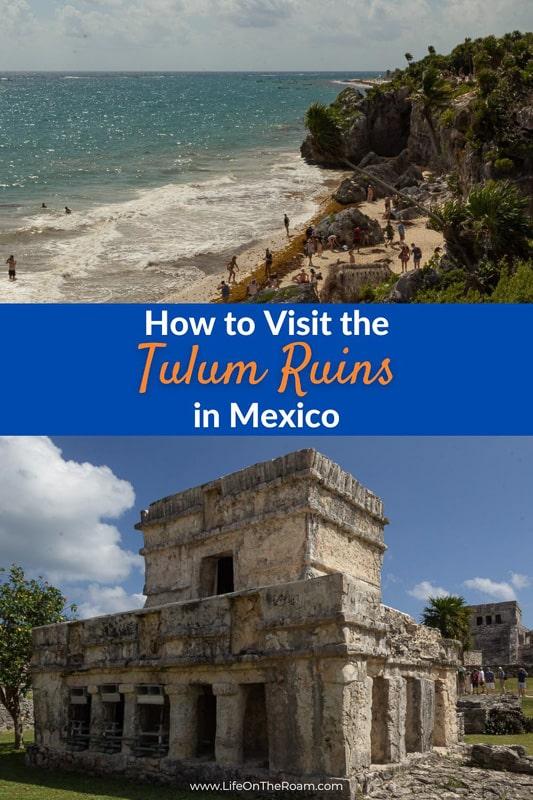
Table of Contents
What is Special About the Tulum Ruins?
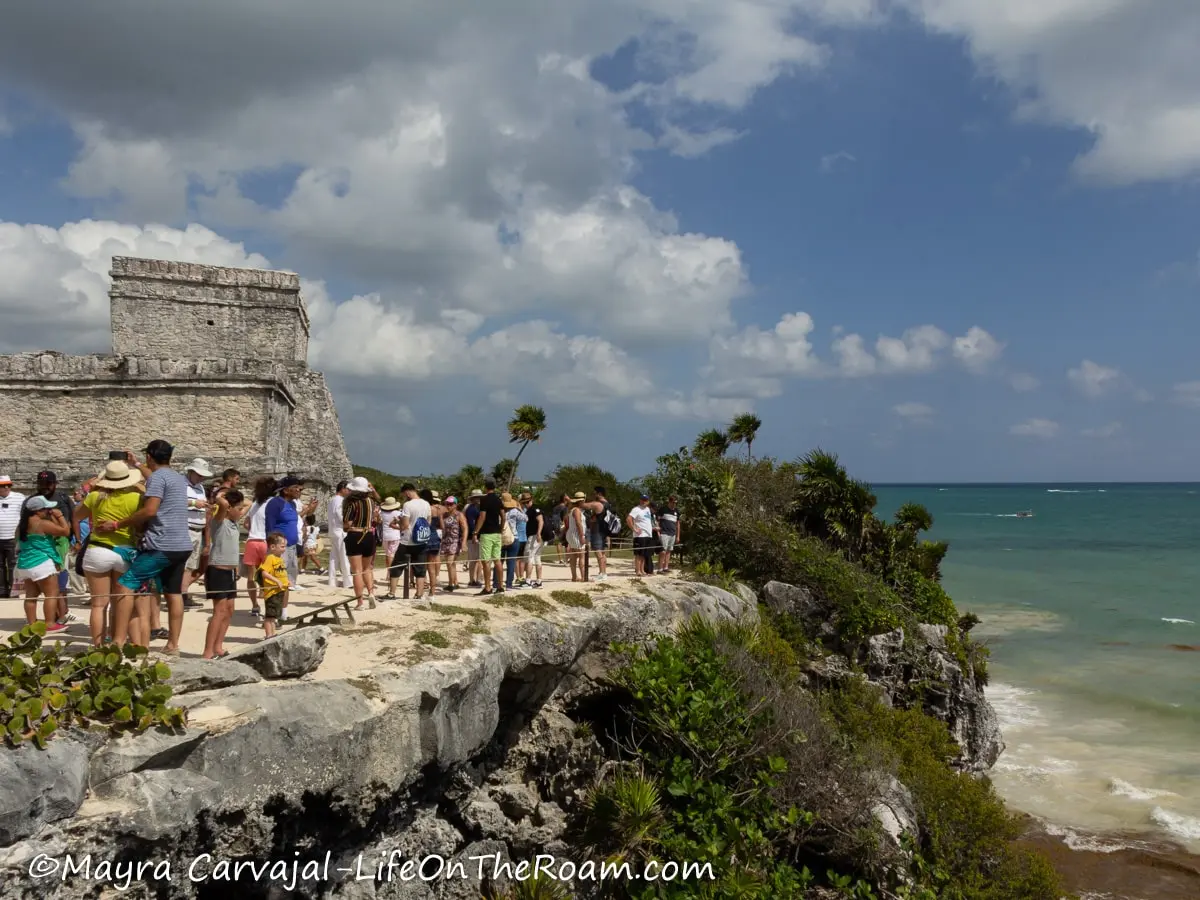
Something unique about Tulum ruins is that it’s the only archaeological site remaining on the shores of the Caribbean Coast.
If we could go back in time to witness Tulum ruins history we would see long canoes dotting the sea carrying cacao, salt, honey, cotton, fur, feathers, pottery, objects made of jade and obsidian, fancy garments, and many other products.
When ships arrived in the port of Tulum (the main commercial port of the area), the merchandise was distributed across the region to other ports such as Xelhá and Xcaret, and to other main cities connected by roads (sacbeob).
Seamen paddled along the coastline bordering the Yucatan Peninsula and beyond, going as far as the Gulf of Mexico and across what is today Belize, the coast of Guatemala, and Honduras. The goodies reached inland destinations via an extensive road network.
Tulum lived its golden era after the fall of Chichen Itzá and Mayapan, which ended with the arrival of the Spaniards in 1542.
Although we won’t see any canoes loaded with precious goods we can still enjoy the beautiful views from the 12-metre tall (39 feet) cliff.
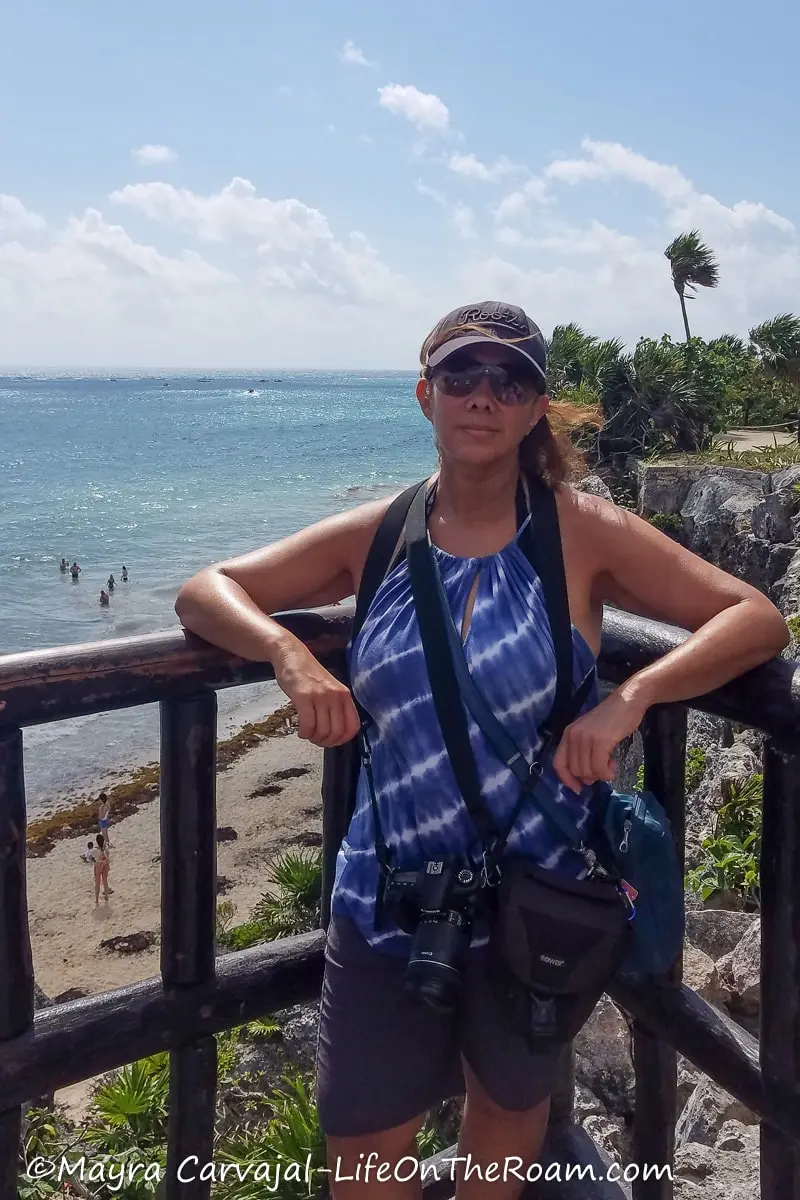
The Tulum Archaeological Site
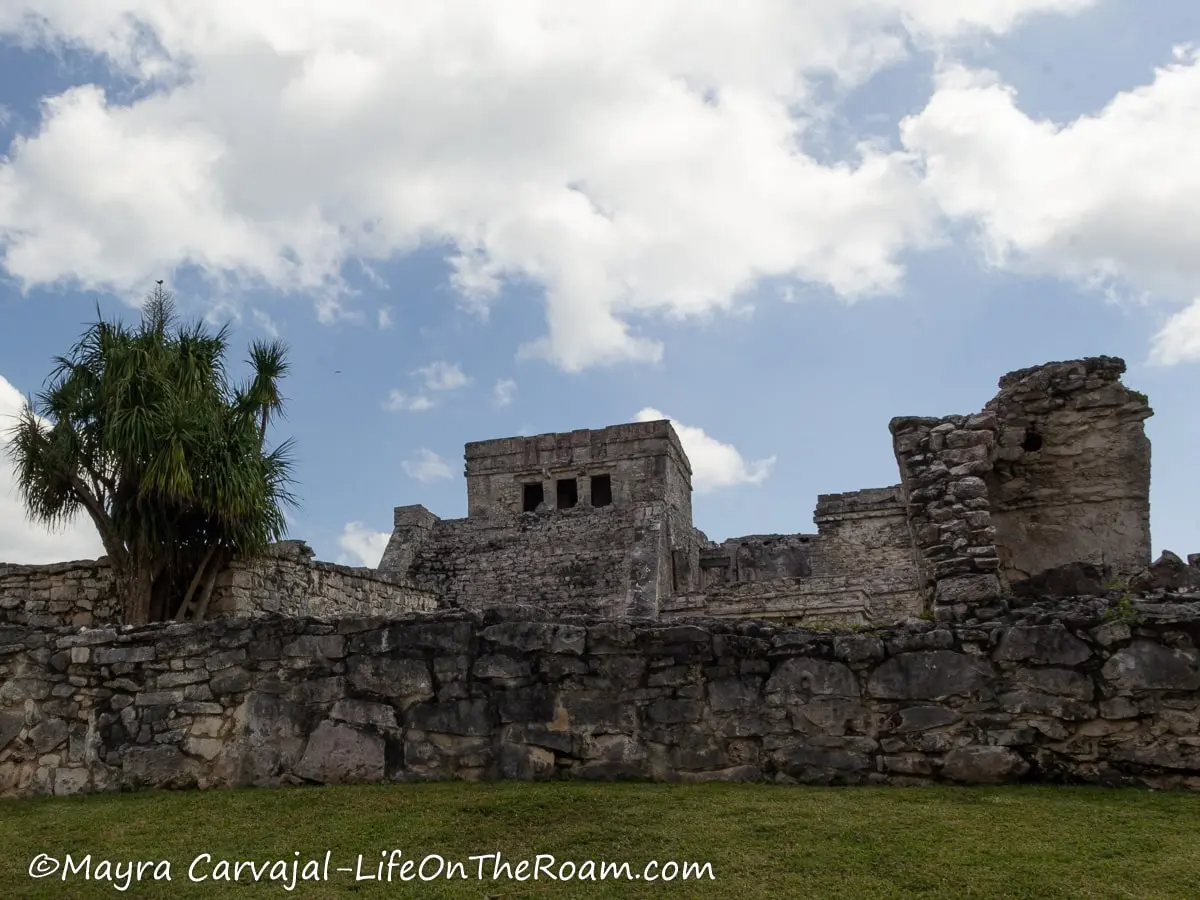
The builders of Tulum, who started working on its construction after 400 A.D., carefully planned its layout based on the sun’s path during the summer solstice and the winter equinox, events linked to agricultural practices.
At that time of the year and only on those specific days, the sun strikes straight through the top opening of the temple of the descending god.
They drew inspiration from the architecture of Chichen Itzá and Mayapan with influences from the East Coast architectural style which you can see in other sites such as Cobá.
Tulum was one of the fortified cities along the East Coast where only the high class had the privilege to access the sacred temples and live inside its three walls (the fourth wall is the bluff).
Today, you can go through the north wall, one of its former five points of entry, and be welcomed by cute coatis roaming around.
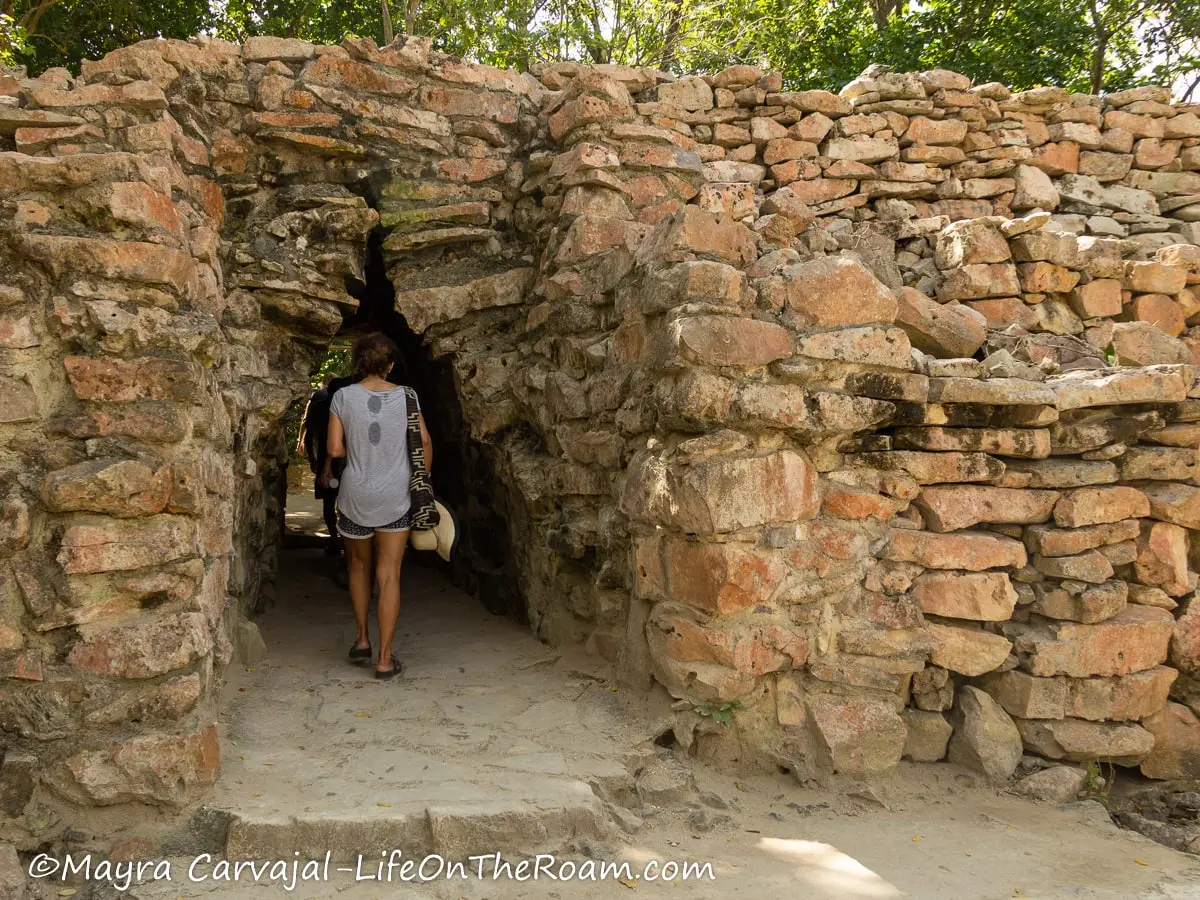

As you walk the sandy paths and see how many iguanas you can count (they’re the only ones allowed in any of the buildings) you can have a glimpse of the places where life revolved around trading, politics, arts, astronomy, and religion.
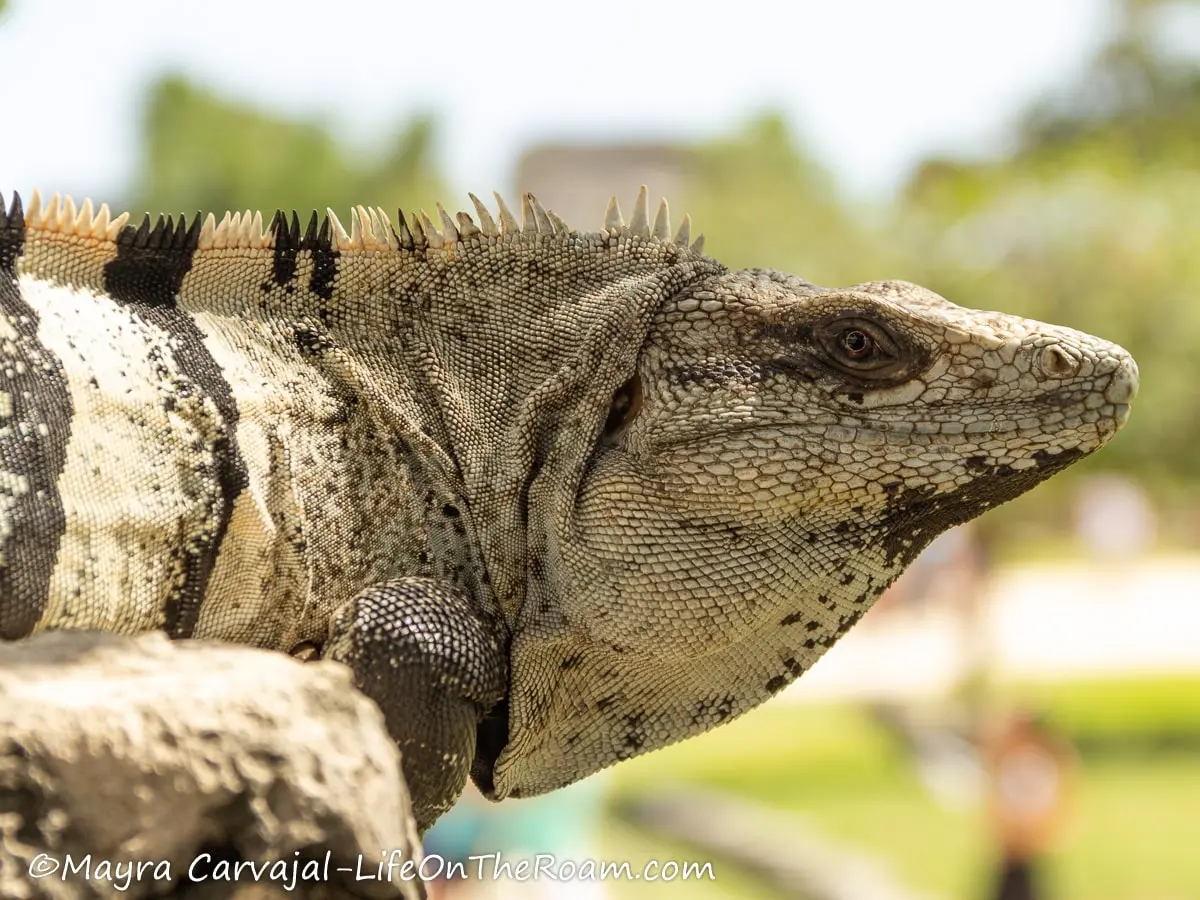
These are the main buildings at the Tulum Archaeological Zone:
The House of the Cenote
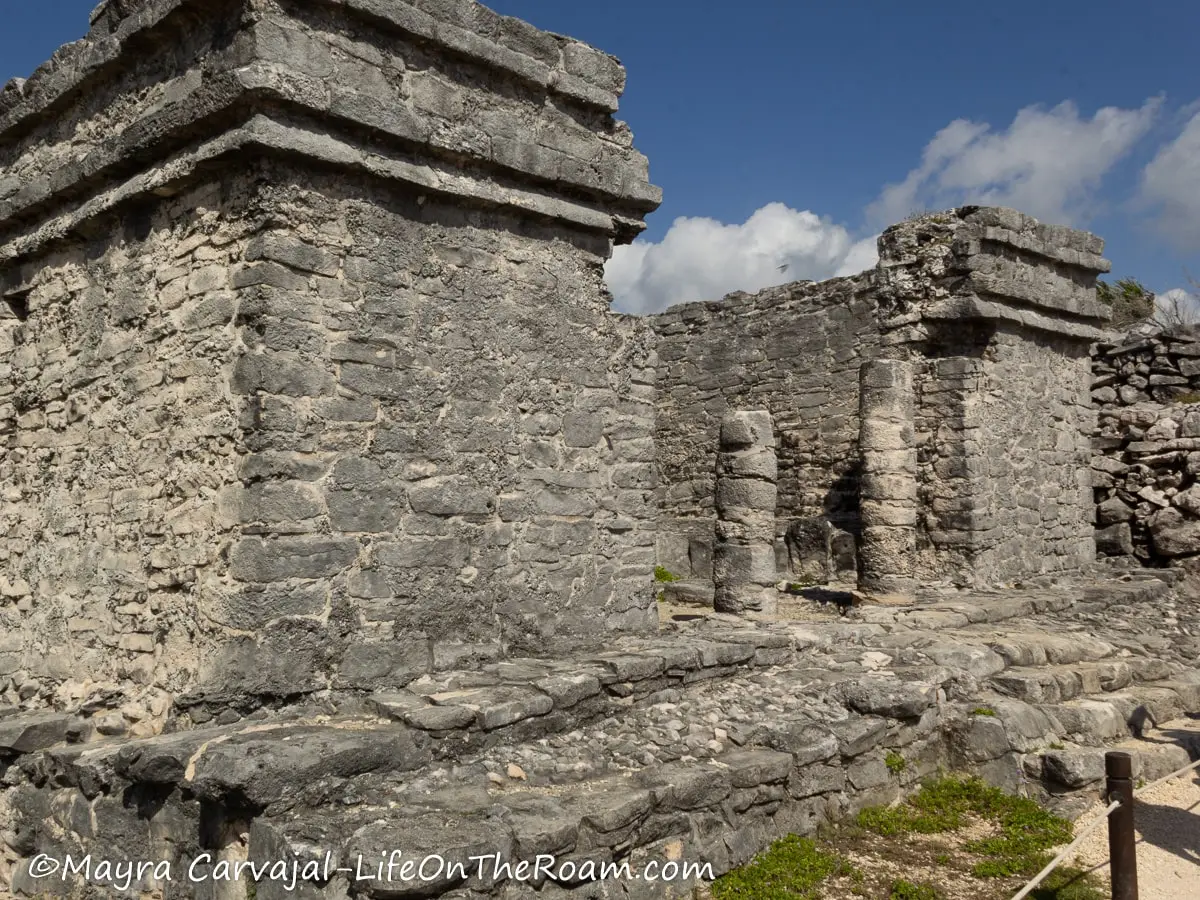
On the East Coast, wherever there was a water source there was some type of structure next to it. Water was a precious commodity in this area and most times it was stored in underground cisterns called chultunes (if you visit Ek Balam you’ll see a big one from the Acropolis).In this case, they built a house made of limestone with a room placed right on top of the cenote, which archaeologists think may have been also been a crypt after finding some human bones.
Nearby you’ll see several mini temples -built at scale- used as altars, which is also a feature common in the area.
The Temple of the God of Wind
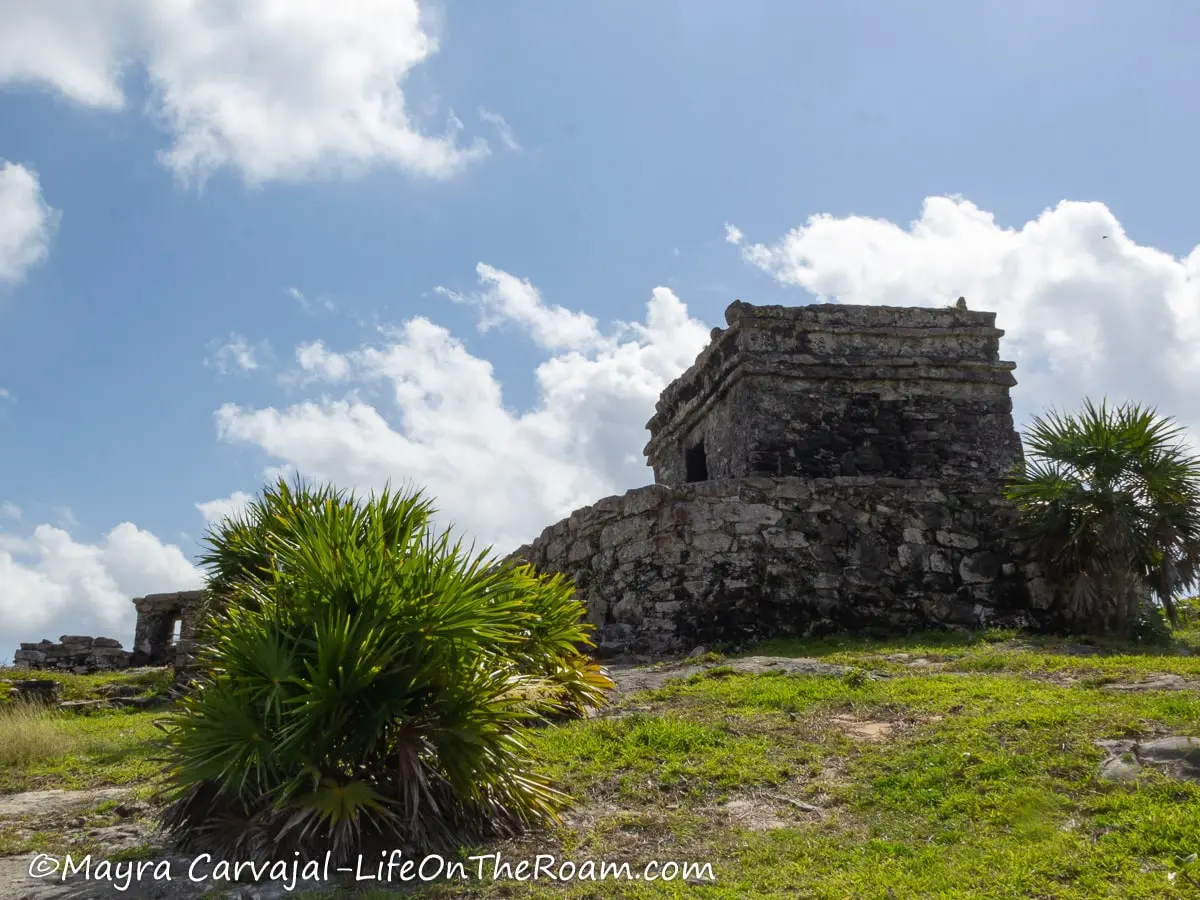
We’re talking about Kukulcan, the god of wind, water, rain and many other things. Like a super god. And rumour has it that he’s the same god that the Aztecs referred to as Quetzacoatl (if you travel around Central Mexico check out the fabulous temple of Quetzacoatl in Teotihuacan).
The temple has a round base, which is a rarity in Mayan architecture, and it’s located at the edge of the cliff. The god of wind deserved nothing less than the best view in town.
The Temple of the Descending God
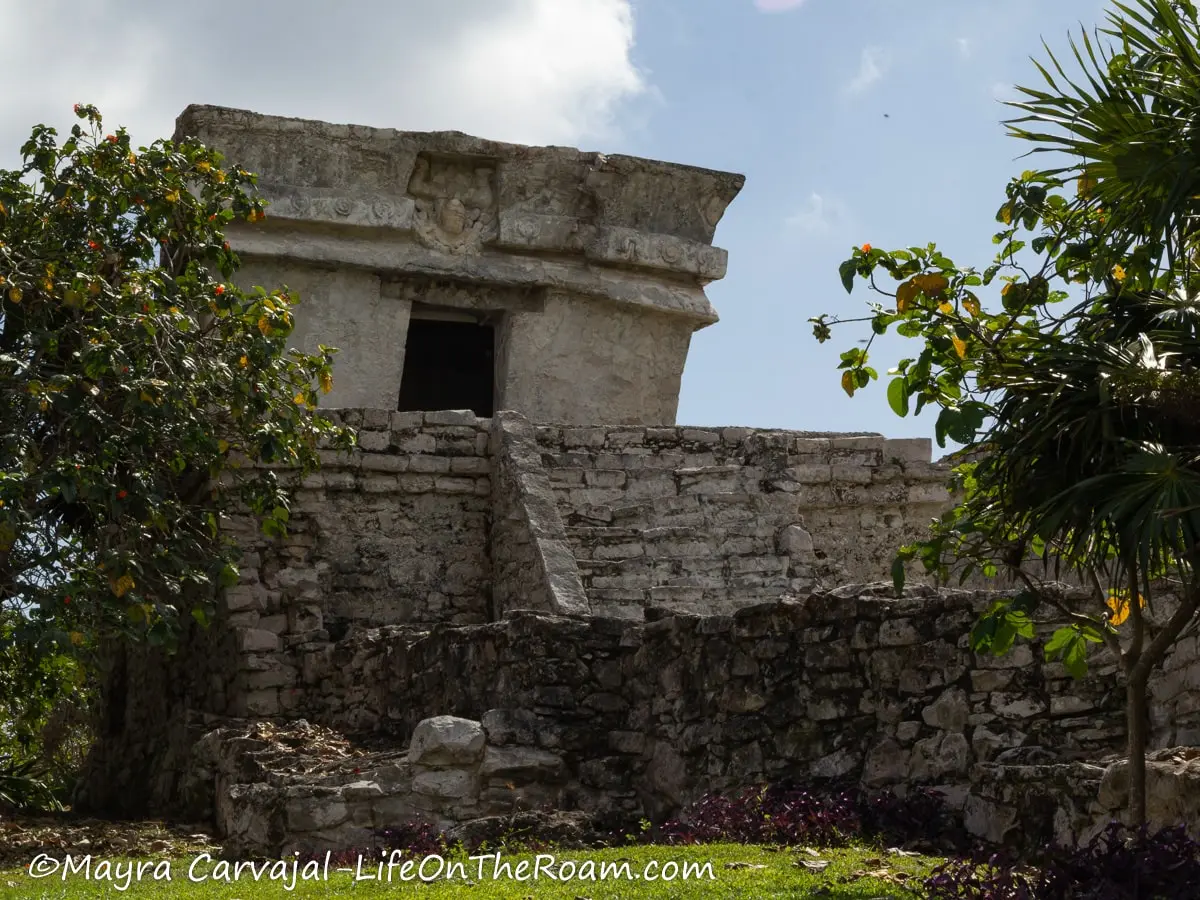
This one is easy to identify as you can see, centered above the main door, a winged upside down figure with a headdress carrying an object in his hands. On each side of the descending god you can still see friezes with round shapes crowning the slanted walls of the temple, as it was originally built.
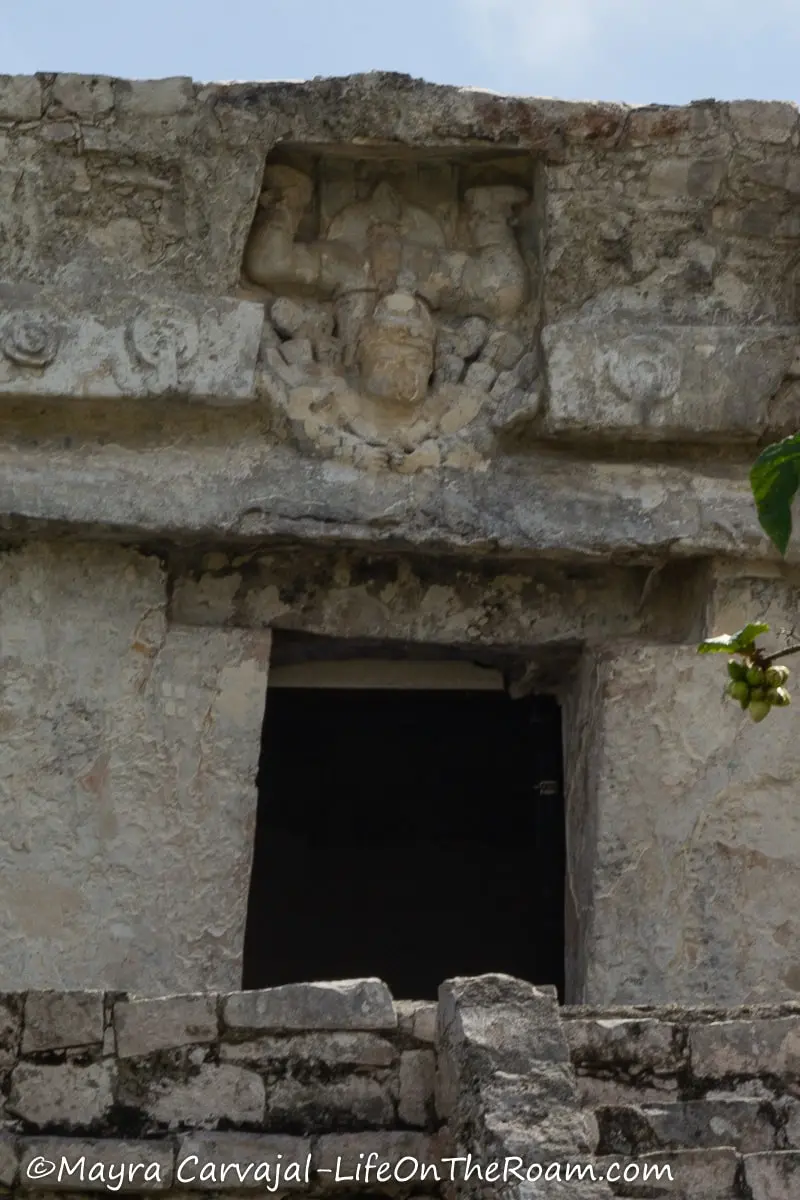
500 years ago all this was decorated with exterior and interior murals in vivid reds and blues depicting deities, nature scenes, and common rituals.
By the way, you’ll see the descending god figure printed on all the signs around the site.
The House of the Columns (Palace of the Great Lord or Casa Halach Uinic)
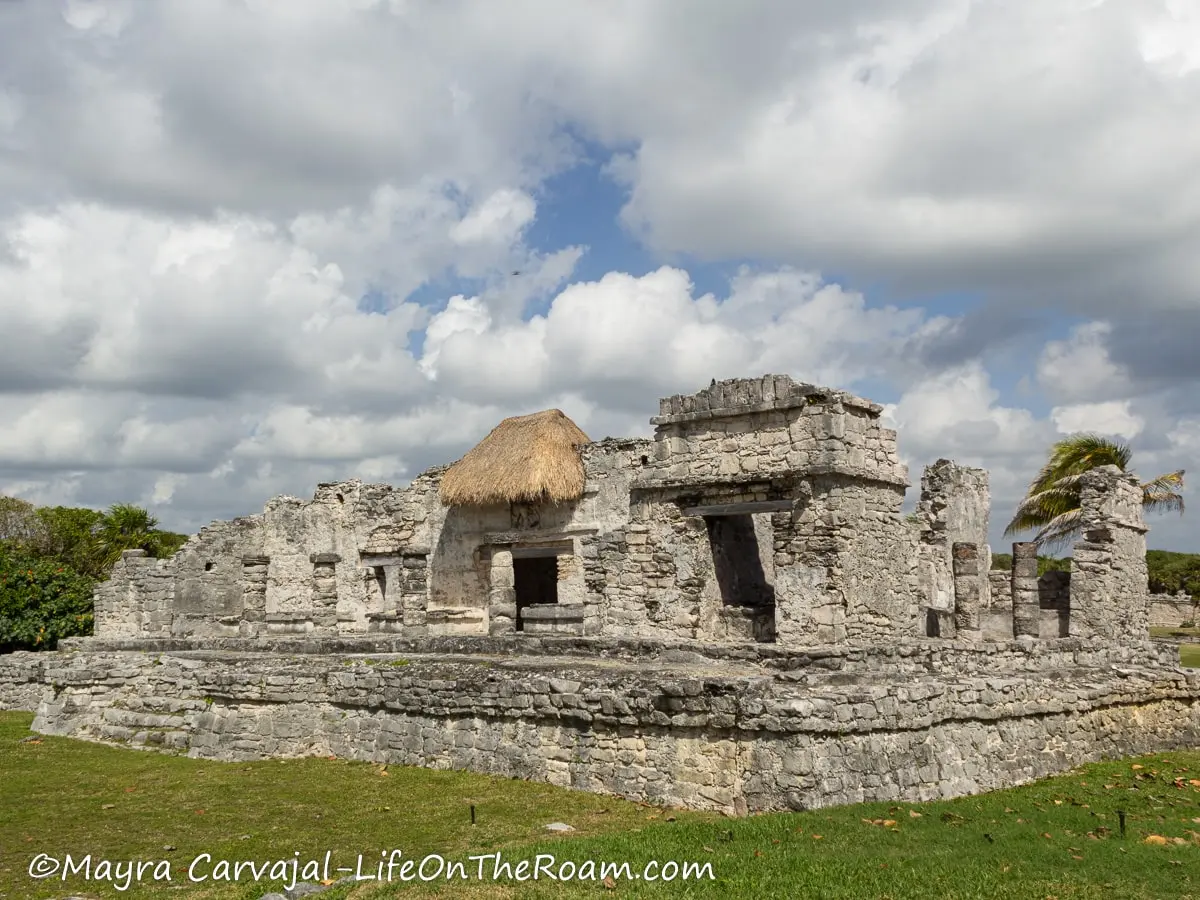
As the name suggests the Great Lord, a VIP in Tulum, lived here with his family in its large rooms with flat roofs resting on columns. From a distance you can still see the benches along the walls, used for seating and sleeping. The family had its own sanctuary at the back for sacred ceremonies, with many more columns.
The Castle (El Castillo)
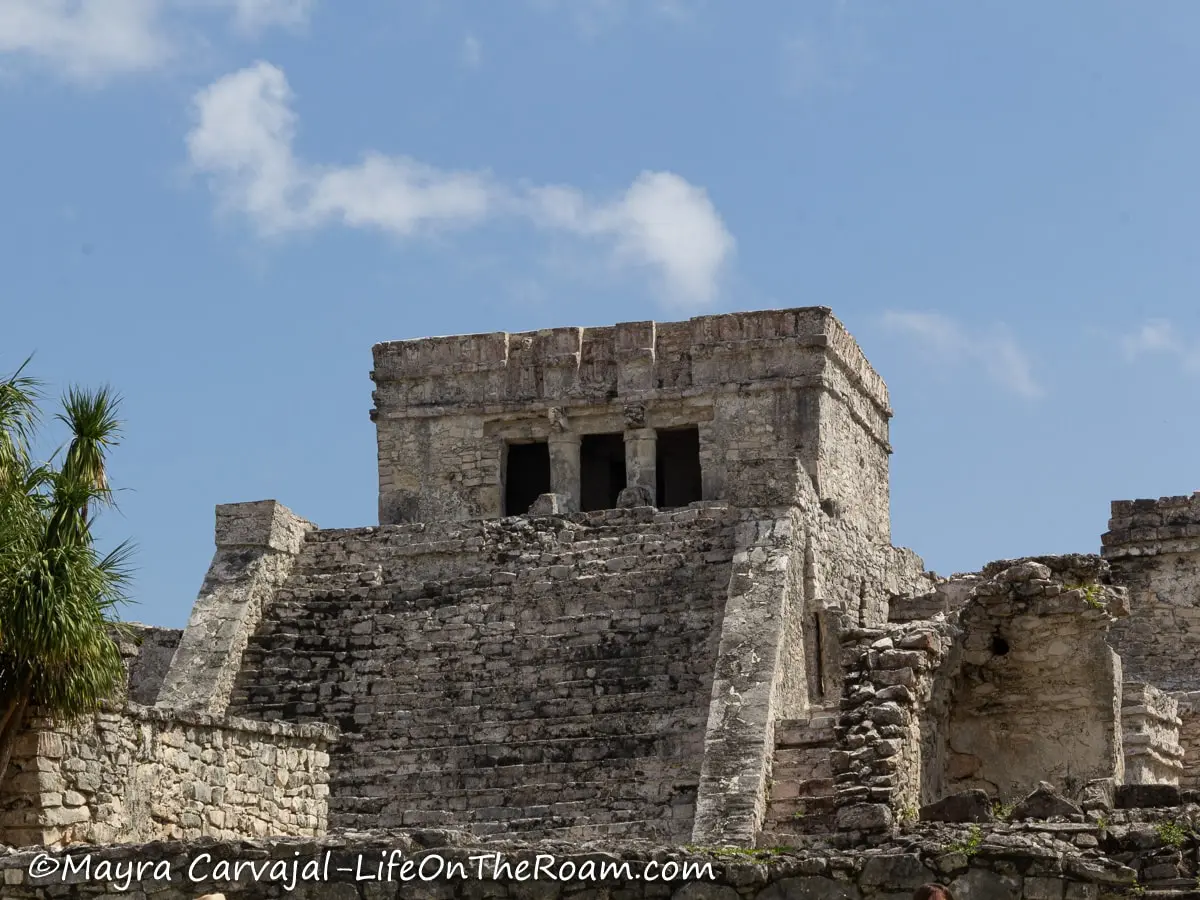
“The Castle” is the star of Tulum (other than the site’s location). Its most imposing and important building has a massive central staircase flanked by a pair of small temples at ground level, with altars for receiving offerings.
The stairs lead to an upper temple that was painted in bright colours, with a flat roof and decorated with masks. It was used for religious ceremonies.
On the web I’ve seen some pictures of El Castillo in Chichen Itzá showing on the search results for El Castillo in Tulum. Take a good look at it because they’re not the same!
The Temple of the Paintings
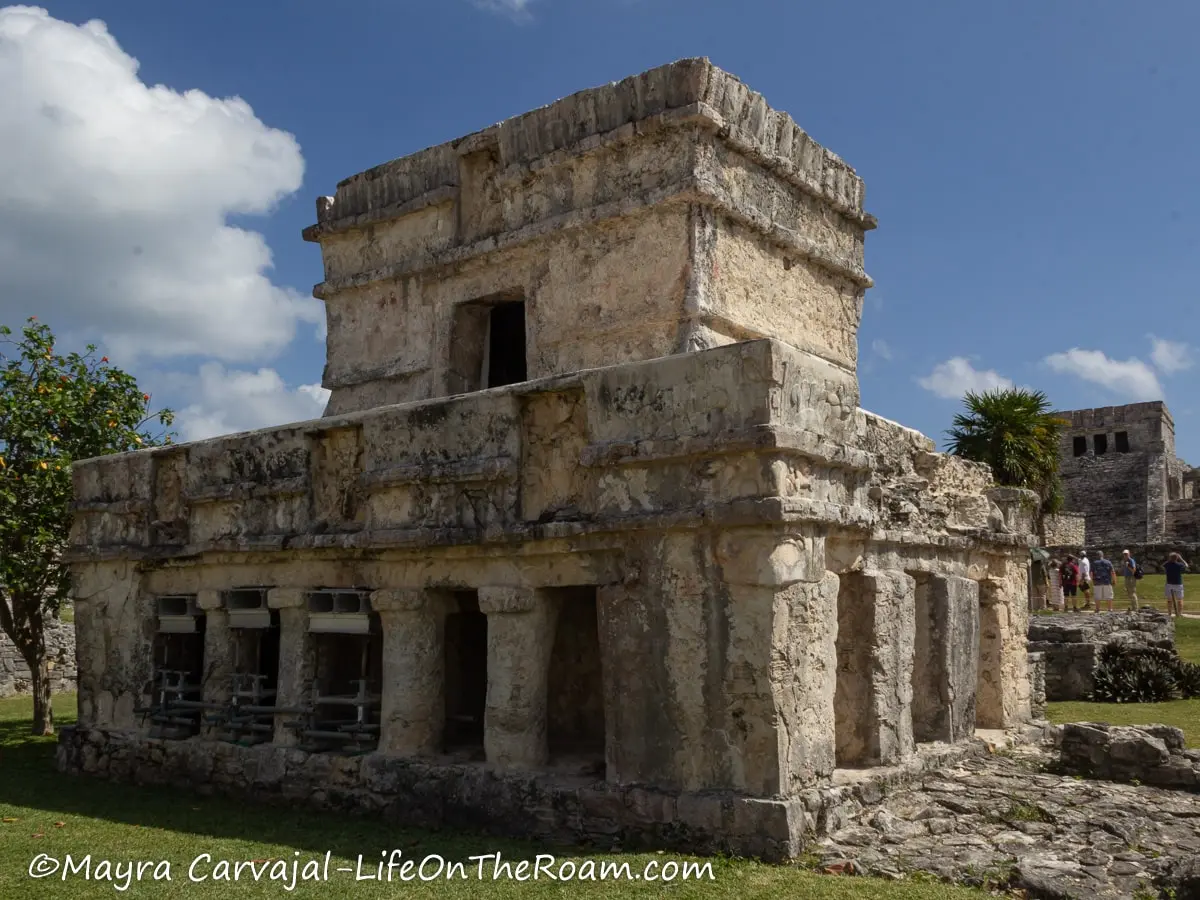
The ornamentation of this building is the best preserved of all the structures in the archaeological site of Tulum. It’s mainly visible on the lintel of the two temples at ground level (there’s one temple inside another).
If you’re wondering where the paintings are, you can’t see them because they’re on the inner temple (although you can see remnants of red paint on the outside). The pigments came from plants (for blues and greens) and minerals (for reds and blacks).
What you can see are the stucco masks and the sculptures adorning the outer temple. The main elements are the masks in the corners, the sculpture of the descending god in the central niche (you can still see the red, yellow, and blue paint), flanked by two sculptures on the adjacent niches.
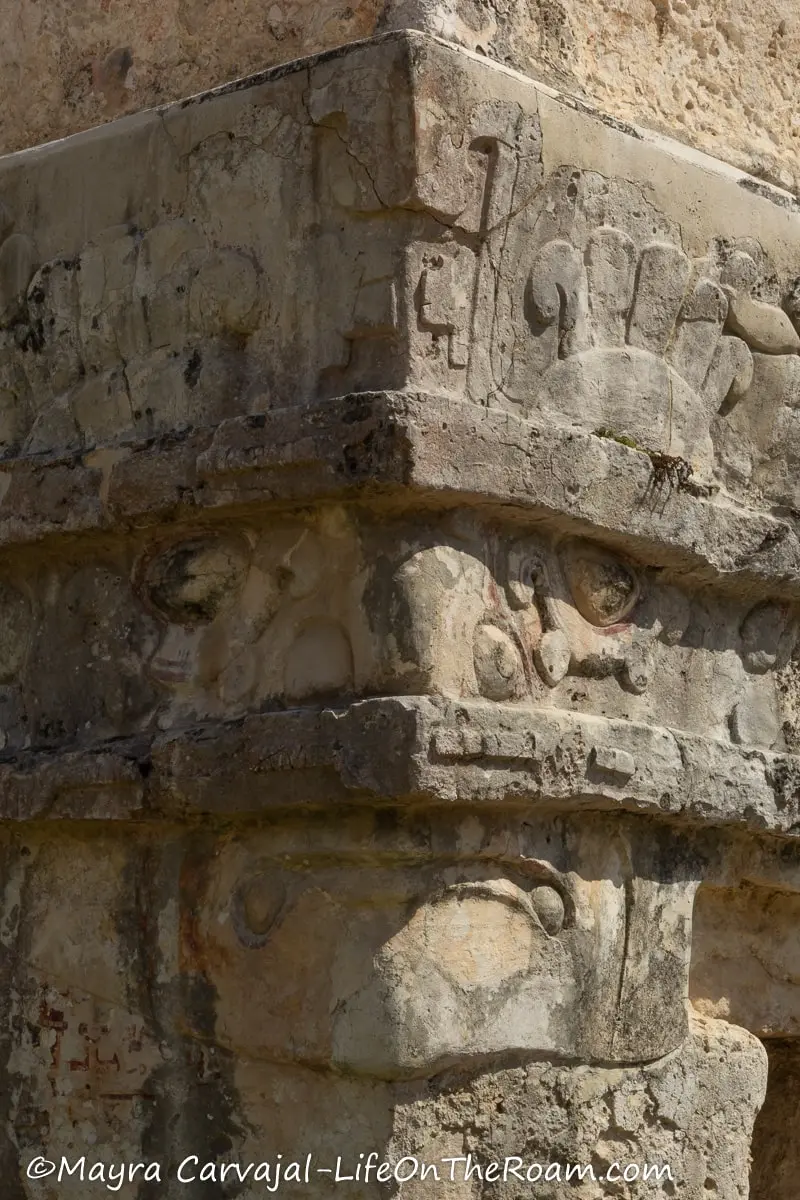
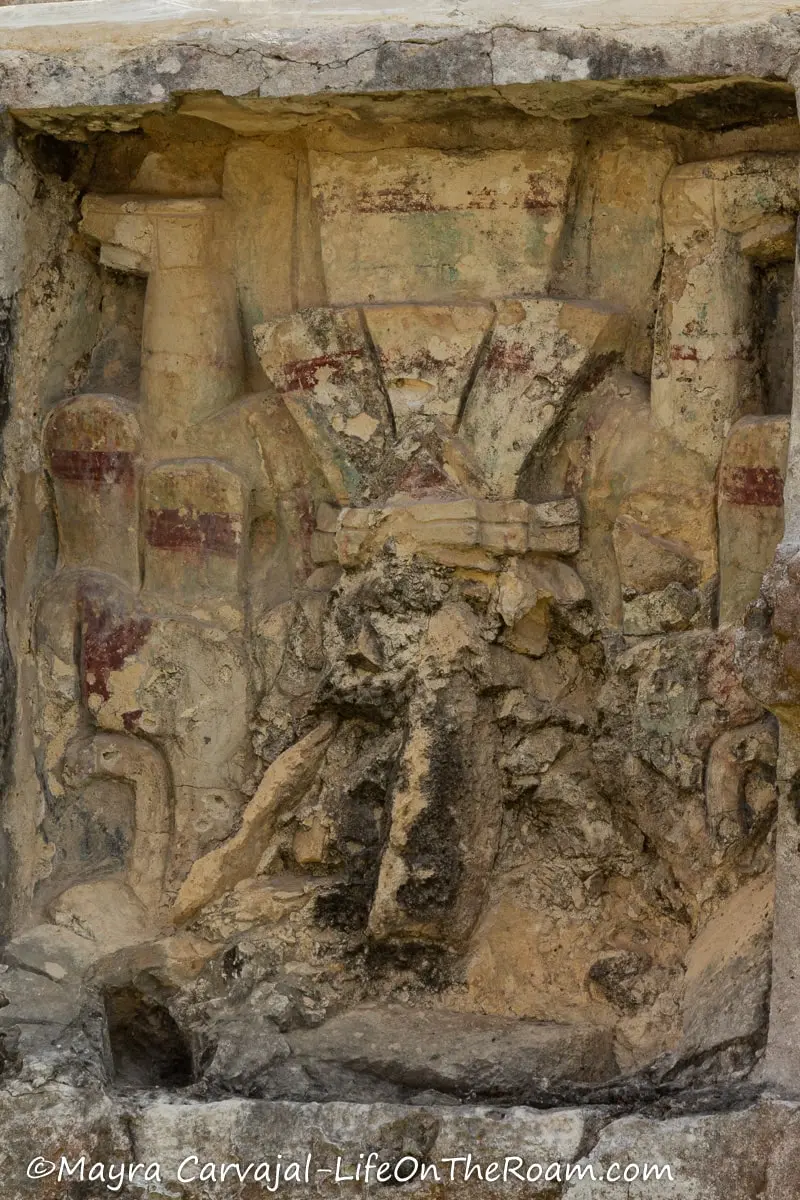
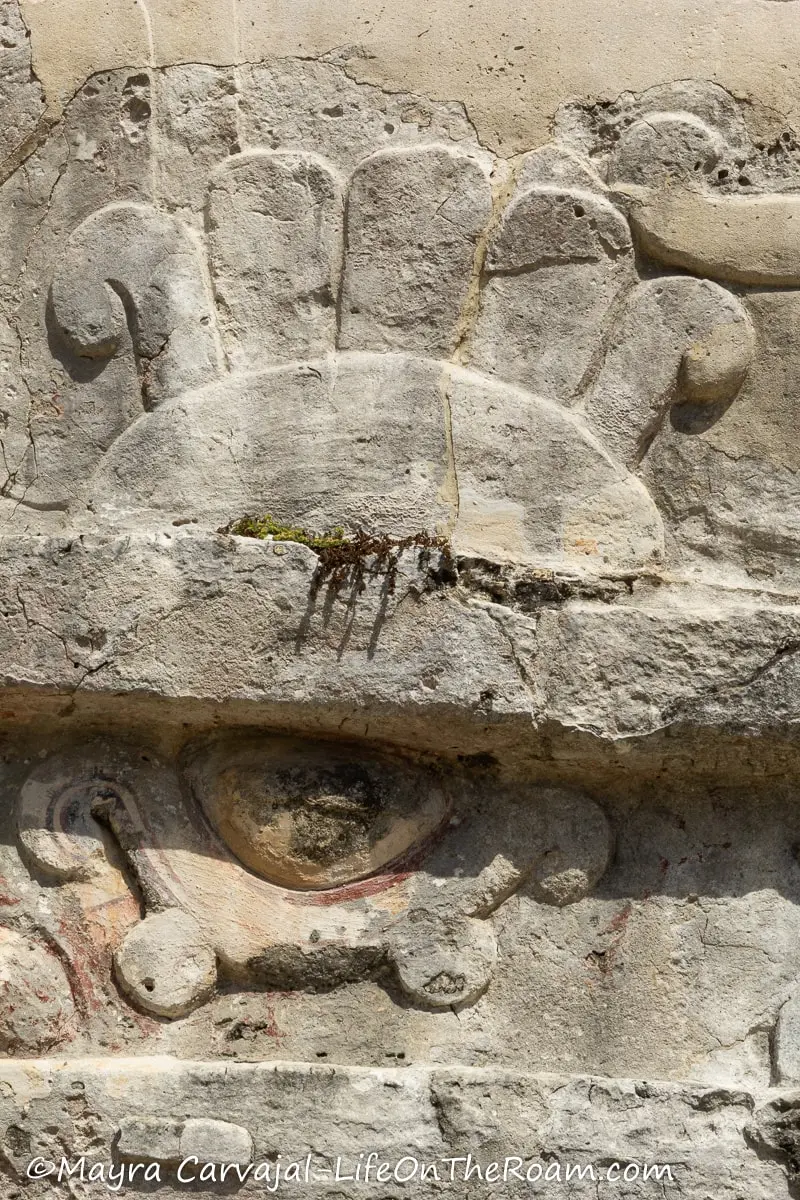
Can you spot the handprints in red in the upper temple?
Best Tours to Visit the Tulum Archaeological Site
If you want to have all arranged for you or you want to combine your visit to Tulum with other activities check out these highly-rated tours:
-Tulum ruins, cenotes, snorkeling a lagoon, and lunch at the beach: this tour picks you up from major spots along the Mayan Riviera, combining a guided visit to the ruins with outdoor fun activities. You’ll visit two cenotes, snorkel in the Yal Ku Lagoon, and have lunch (included) at a white sand beach. 16 people max.
Book this tour, with a rating of 4.9/5 based on more than 1,640 reviews.
-Small group to Tulum ruins, swim in three cenotes, and tequila tasting: guided walk of the Tulum ruins or view of Tulum from a boat that includes a snorkeling stop. After a tequila tasting you’ll swim in three cenotes and have a traditional Mexican lunch. This tour picks you up from any accommodation in Tulum (additional fee for pickups elsewhere). 10 people max.
Book this tour, with a rating of 4.9/5 based on more than 160 reviews.
-Private half-day morning tour of Tulum ruins: this is your best option if you only want to see the ruins and nothing else, with your own group and no one else. Pick up is available from the Akumal, Tulum, or Playa del Carmen area.
Book this tour, with a rating of 5/5 based on more than 150 reviews.
Tulum Ruins vs. Chichen Itza
If you’re after the Wow factor in the form of tall pyramids and big temples, go to Chichen Itzá. You’ll also feel the Wow factor in your wallet, as the entrance fee is over six times more expensive than Tulum
As you can see from the pictures, you won’t find pyramids in Tulum and the buildings are on the low side and rather simple. If you visit Tulum after visiting sites like Chichen Itzá or the spectacular Uxmal (my favourite) you may feel underwhelmed.
So, is it worth seeing the Tulum ruins?
Despite what you read above, my answer is yes. In addition to the history of the site (the main trading port in the Yucatan Peninsula), the magic of Tulum is location, location, location. Seeing the main buildings as you walk along the bluff with the sea in the background is something you won’t experience at any other site.
And you can take the stairs down to the beach!
What Else to Do at the Tulum Ruins
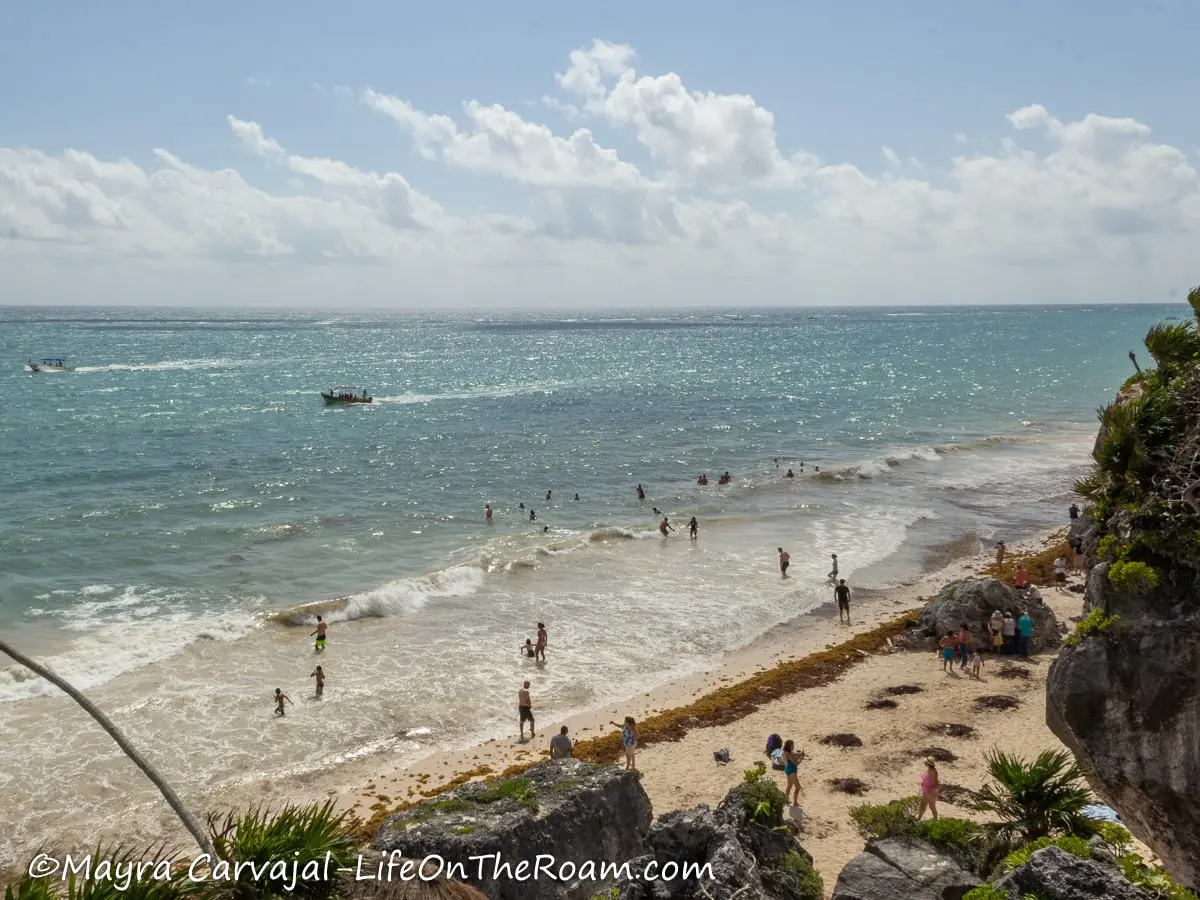
Go to Ruins Beach
Take the stairs at the edge of the cliff and dip your toes in Playa Ruinas. I don’t think there’s a better way to wrap up your visit to the ruins than laying down on the beach.
However, you may find an unwanted visitor: the smelly sargassum that it’s showing up sooner than usual and in massive quantities. So don’t hold your hopes too high.
Check Out the View from the Tulum Tower
*This attraction is located before the entrance to the ruins*
As you arrive at the ADO bus station or the parking lot you’ll see in the distance a 118-feet high white tower from where you can have a bird’s eye view of the Tulum ruins, the surrounding jungle and the turquoise sea.
This is an aerobar that, in the span of 45 minutes, will slowly take you high up while it rotates so you enjoy a 360º view of the area.
You’ll listen about the history of the site while you sip on cocktails (not included) with music in the background (you may try karaoke).
Book your ride to the Tulum Tower.
Visit the Mystika Immersive Experience
*This attraction is located before the entrance to the ruins*
Let the wonderful imagery of photographer Pepe Soho embrace you and transport you to sanctuaries across Mexico, Mayan archaeological sites under the shining stars, and a healing journey next to majestic horses.
I visited Pepe Soho’s gallery in Playa del Carmen and his images are nothing short of stunning, with a strong spiritual significance.
This museum is located between the site parking lot and the entrance to the Tulum ruins.
Tips for Visiting the Tulum Ruins
-Bring sunscreen, sunglasses, and a hat: there is no shade.
-Bring water: even though this is a small site that can be easily viewed in two hours or less, it gets hot as hell in this part of the world. Stay hydrated.
-Bring your swimsuit and a towel: just in case you decide to take the stairs down to the beach.
-Arrive early: less heat and humidity and less crowds. This is a popular site and it gets busier after 10AM.
-Avoid Sundays: entrance is free for Mexican citizens and residents on Sundays: more people.
-Buy your ticket at the official site entrance: which isn’t the parking lot or anywhere before that point.
-Tulum ruins entrance fee: MXN$90
-Open daily: 8AM-5PM
How to Get to Tulum by Bus
If you don’t want to rent a car to explore other archaeological sites of the Yucatan Peninsula there are frequent buses from Cancun and Playa del Carmen.
You can take the ADO bus from either the Cancun ADO station (an approximately 2.5-hour trip) or from Playa del Carmen (Turistica) -the ADO station that is at the south end of 5th Avenue, at the corner with Benito Juárez Avenue (a 1-hour trip). You can download the ADO app to your phone.
When you check the schedule online you must look for Tulum Zona Arqueologica, otherwise it will take you to the town of Tulum instead of Tulum (Ruinas).
The site entrance is a 10-minute walk from the bus station.
Are you lured to the amazing views of the Tulum archaeological site? The unique history and location of these ruins make up for the lack of huge pyramids. If you’re staying in the Tulum area they’re a wonderful option for something to do nearby when you want to take a break from the beach.
YOU MAY ALSO WANT TO READ
BOOKING FLIGHTS AND ACCOMMODATIONS
Book your flight without losing your shirt
We check Momondo to find great deals to book our flights. Also, check Great Escape: it combines the listings from Expedia, Kiwi, Kayak, (and Skyscanner on the premium service) to find the best airfares.
To find a place to stay for less
Booking.com: this site combines everything under the sun. You’ll find hotels, apartments, B&B, hostels, rooms, etc., with all sort of filters to make your search a breeze.
Hotwire: the first site I check when we plan to stay at a hotel for a few nights. You can save anything from 20% to 60%. Use the search filter to find what you want and you’ll end up with three listings that match your criteria. You’ll know which one you’ll get after you book. If you can handle a little bit of uncertainty you can score big savings.
House Sitting: you take care of people’s pets and house for free while staying for free. It’s the closest thing to experiencing a place “like a local”. But it comes with responsibilities… Are you an animal lover? It may become your new way to travel.
To get travel insurance
SafetyWing: travel medical insurance that gives us peace of mind knowing that we’re covered in case of emergency. It’s convenient, affordable, and suitable for digital nomads who spend a long time outside their home country.
Check the full list of travel resources on my Resource Page for more options and savings
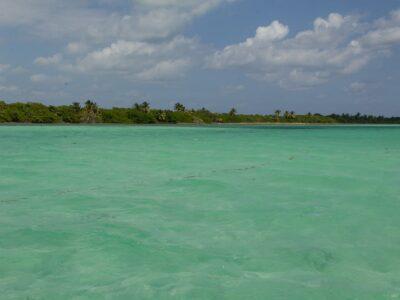
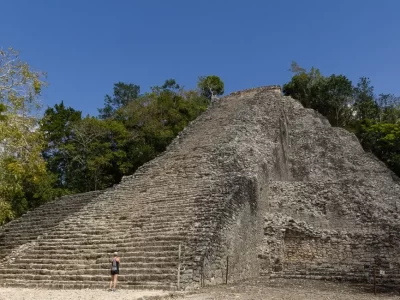
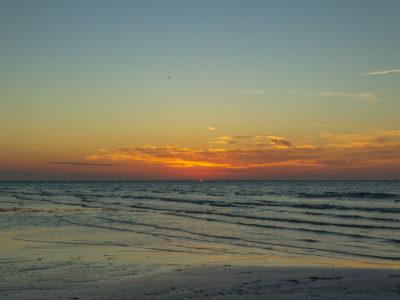
Fantastic post! So so much to see! Beautiful pics!!!! And the history, amazing!
Thanks for such a comprehensive post!
Christine
Yes, so much to see!
Thanks for reading 🙂